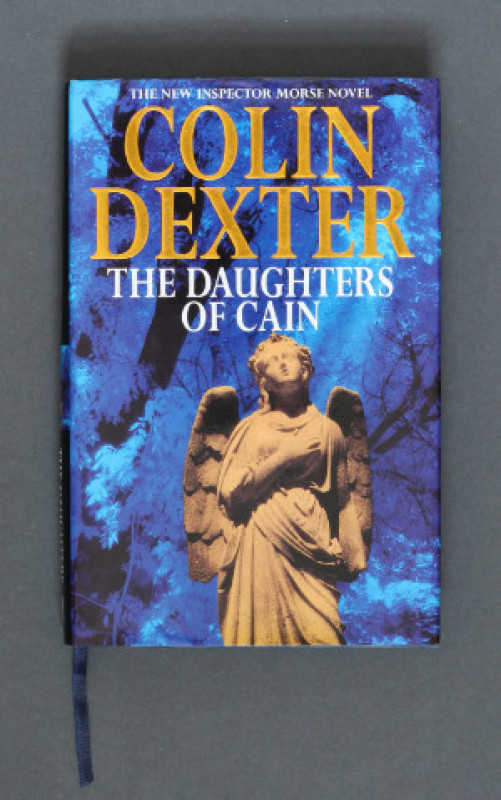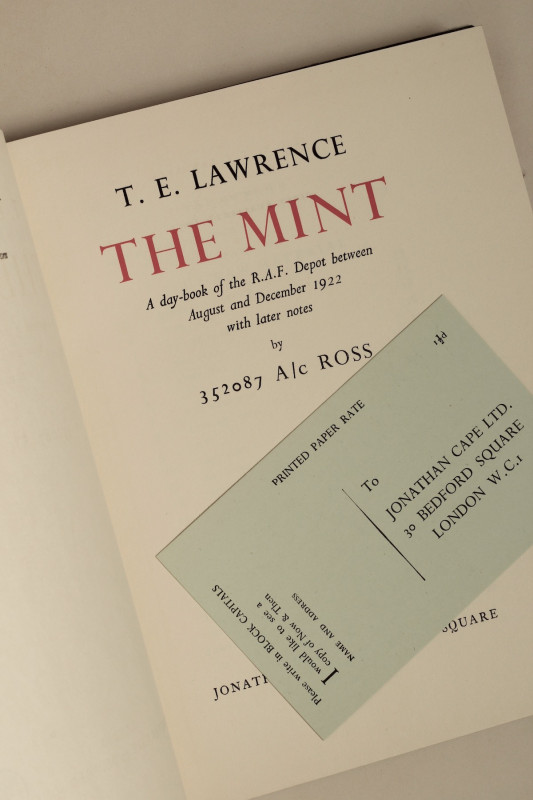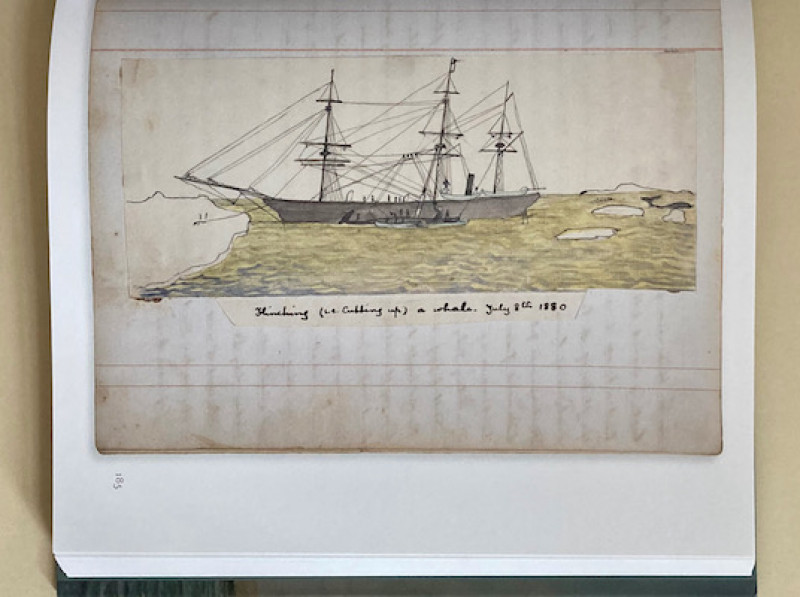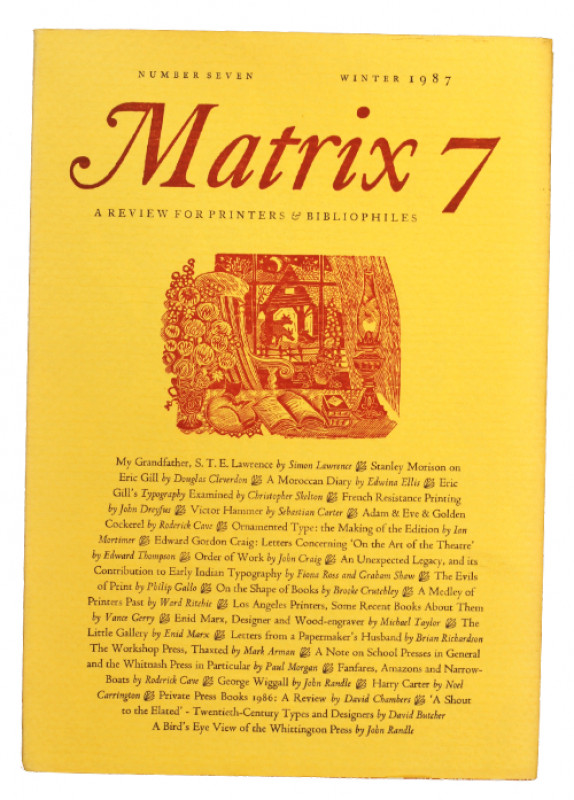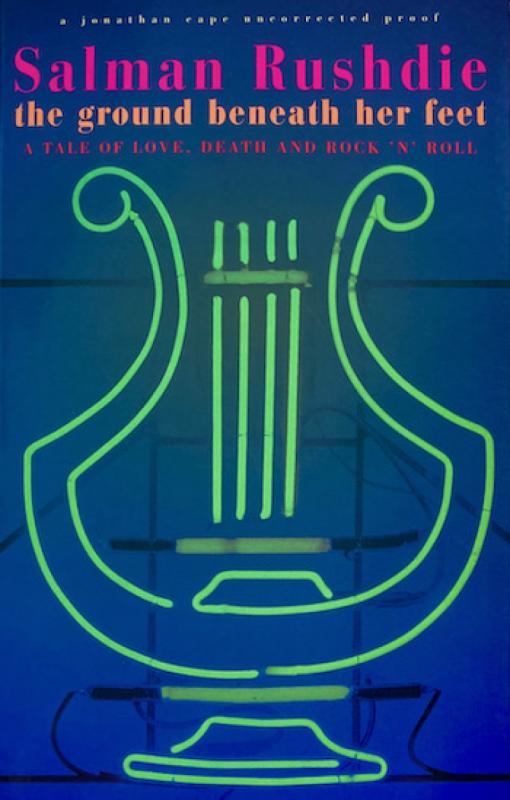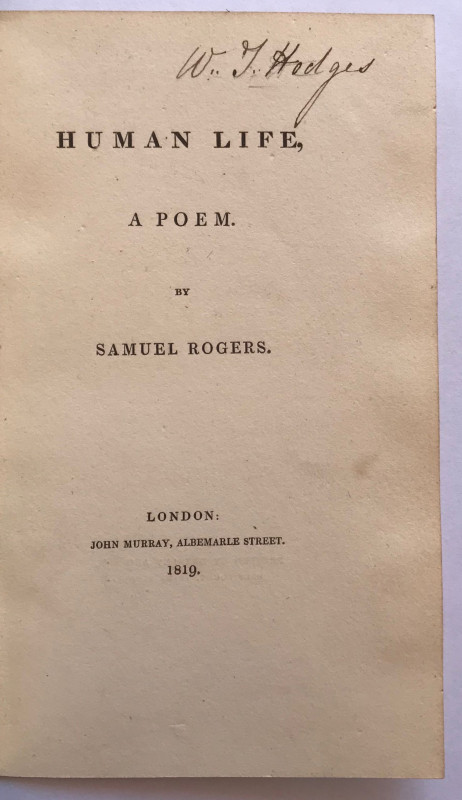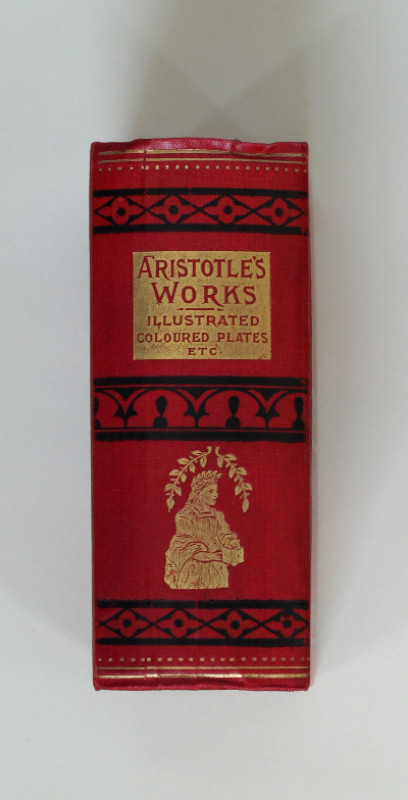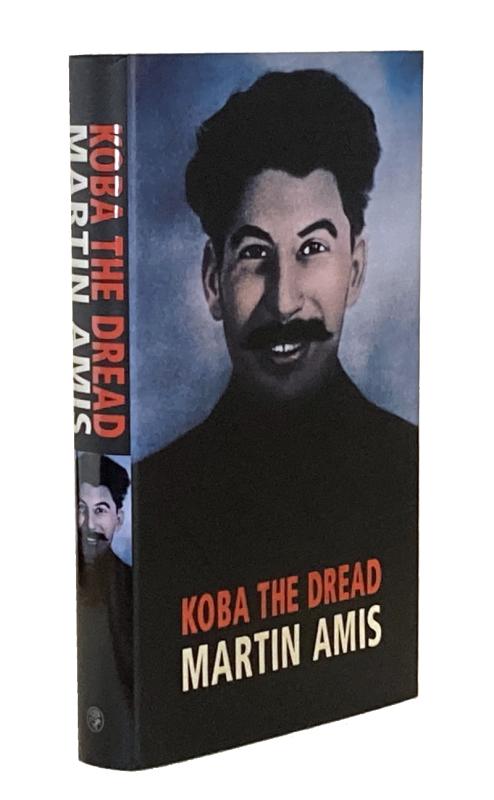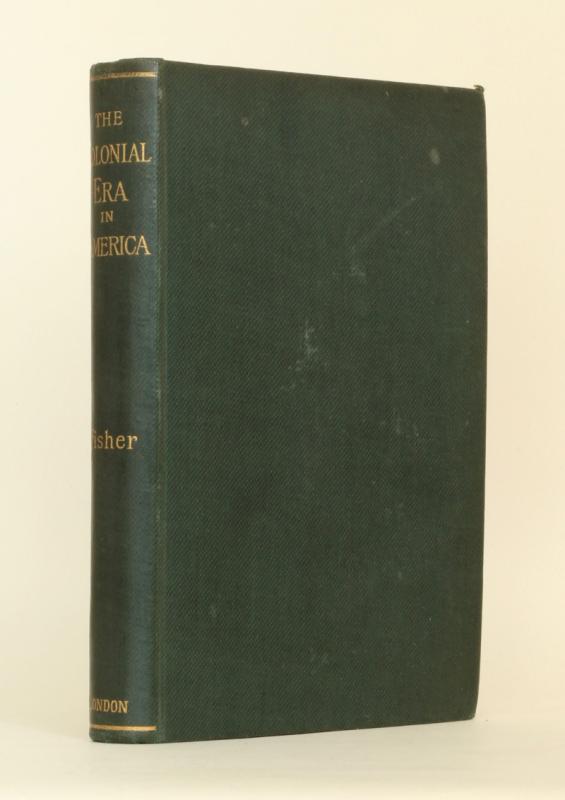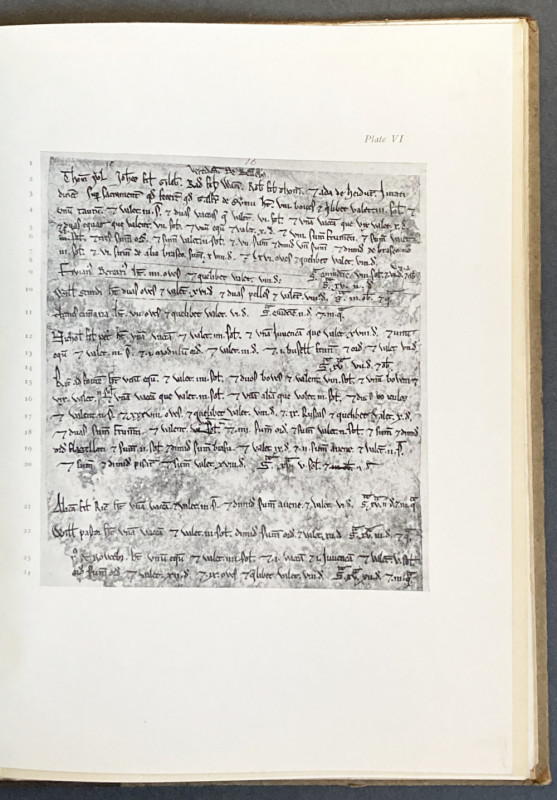How Stanley Wrote “In Darkest Africa”... [from the library of Quentin Keynes]
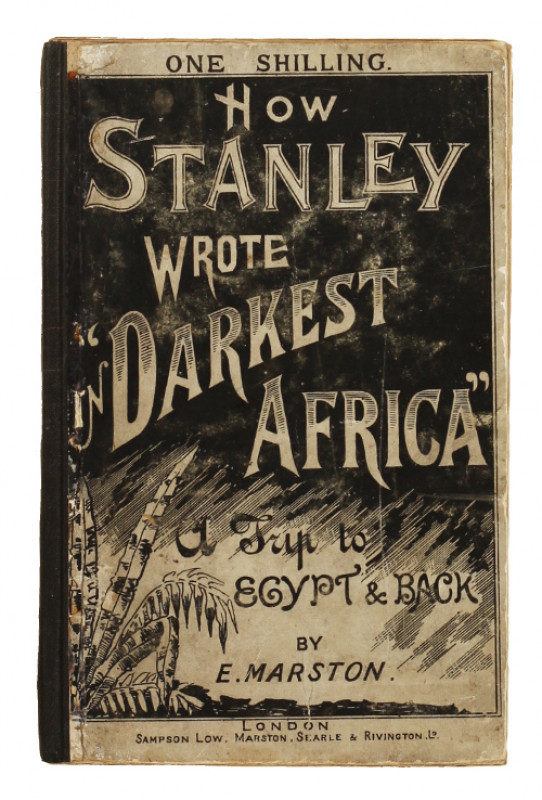


Book Description
SCARCE FIRST EDITION OF ‘AN INTERESTING LITTLE WORK WHICH GIVES CONSIDERABLE INSIGHT INTO THE WORK STANLEY PUT INTO PREPARING’ IN DARKEST AFRICA
MARSTON, Edward. How Stanley Wrote “In Darkest Africa”. A Trip to Cairo and Back … (Partly Reprinted, with Illustrations, from “Scribner’s Magazine”, with Alterations and Considerable Additions.). London: William Clowes and Sons, Limited for Sampson Low, Marston, Searle & Rivington Limited, 1890.
Octavo (165 x 104mm), pp. xi (half-title, advertisement on verso, frontispiece, verso blank, title, other works by the author on the verso, preface, advertisement for In Darkest Africa, contents), [1 (illustrations)], 80, [4 (advertisements)]. Half-tone frontispiece and 8 half-tone and woodcut plates, all included in the pagination and integral to the quires. 3 full-page illustrations after Marston et al. and one double-page facsimile in the text. (A few light marks.) Modern cloth-backed boards covered with original printed covers and pastedowns, upper board with illustration, lower board with advertisement, endpapers with illustrated advertisements. (Boards slightly marked and a little rubbed, some slight cracking on hinges and minor restoration.) A very good copy of a scarce work.
Provenance: Quentin George Keynes FRGS (1921-2003).
MARSTON, Edward. How Stanley Wrote “In Darkest Africa”. A Trip to Cairo and Back … (Partly Reprinted, with Illustrations, from “Scribner’s Magazine”, with Alterations and Considerable Additions.). London: William Clowes and Sons, Limited for Sampson Low, Marston, Searle & Rivington Limited, 1890.
Octavo (165 x 104mm), pp. xi (half-title, advertisement on verso, frontispiece, verso blank, title, other works by the author on the verso, preface, advertisement for In Darkest Africa, contents), [1 (illustrations)], 80, [4 (advertisements)]. Half-tone frontispiece and 8 half-tone and woodcut plates, all included in the pagination and integral to the quires. 3 full-page illustrations after Marston et al. and one double-page facsimile in the text. (A few light marks.) Modern cloth-backed boards covered with original printed covers and pastedowns, upper board with illustration, lower board with advertisement, endpapers with illustrated advertisements. (Boards slightly marked and a little rubbed, some slight cracking on hinges and minor restoration.) A very good copy of a scarce work.
Provenance: Quentin George Keynes FRGS (1921-2003).
Dealer Notes
First edition. In 1885 the German physician and scientist Eduard Schnitzer (known as Emin Pasha), the governor of Equatorial Sudan, had become trapped by the Mahdist forces at Wadelai, Uganda following the Mahdist revolt against Egyptian rule. Emin was, however, able to send letters back to Europe to alert friends to his plight, and these letters had created great concern for his safety, particularly after the death of General Gordon at Khartoum on 26 January 1885. An expedition to relieve him was proposed by William Mackinnon, the Chairman of the British India Steam Navigation Company, and Henry Morton Stanley was asked to lead it. In 1887 Stanley arrived at Zanzibar and then travelled around the Cape to the mouth of the Congo, then to Leopoldville, and thence along the Congo into the centre of the continent, to the river’s confluence with the Aruwimi River. From there Stanley journeyed to the village of Yambuya, which he reached on 15 June 1887. Leaving the Rear Column at Yambuya, Stanley and an advance party of some 400 embarked upon a 450-mile, five-month-long journey through the Ituri rain forest to Lake Albert, where they mistakenly hoped to find Emin, who was at Wadelai. Eventually, on 29 April 1888, Stanley met Emin Pasha at Lake Albert, but was unable to persuade him to leave immediately. Therefore, Stanley decided to return to find his Rear Column, leaving Jephson with Emin. Once Emin was persuaded to leave Equatoria, the party reached the coast on 4 December 1889, and Stanley travelled via Zanzibar to Cairo, where he spent two months writing an account of the expedition.
Stanley contacted the publisher and author Edward Marston FRGS (1825-1914), who was a partner in the company Sampson, Low, Marston, Searle & Rivington, and invited him to Cairo in order to assist the progress of the book, which Marston did, before returning to London with part of the manuscript. Marston then wrote an account of his visit for Scribner’s Magazine, which was published in August 1890, and he explains in his preface (dated ‘September, 1890’) that ‘[t]his article I have now revised by the light of later experience, and I have added other matter having reference to my trip to Egypt, together with some new Illustrations’ (p. [vii]). Casada judged How Stanley Wrote “In Darkest Africa” ‘[a]n interesting little work which gives considerable insight into the work Stanley put into preparing his account of the Emin expedition. Marston [...] describes Stanley’s approach to writing, the problems he encountered as an author, and similar aspects of his efforts in getting the account ready for publication. There are interesting illustrations of Stanley at work on the book’. How Stanley Wrote “In Darkest Africa” was issued in ‘fancy boards’ at a price of one shilling, and this copy retains the original covering laid down over modern boards.
This copy is from the collection of the explorer and bibliophile Quentin Keynes, who travelled extensively in Africa throughout the second half of the twentieth century and collected a remarkable library relating to the exploration of Africa, particularly during the nineteenth century. Some of these works provided the basis for Keynes’s Roxburghe Club book The Search for the Source of the Nile: Correspondence between Captain Richard Burton, Captain John Speke and Others, from Burton’s Unpublished East African Letter Book; together with Other Related Letters and Papers (London, 1999).
Liniger-Goumaz and Hellinga, Stanley, 1044; Casada, Dr. David Livingstone and Sir Henry Morton Stanley, 1440.
* * *
This is one of the books from our recent Africa catalogue, which you may enjoy browsing. Catalogue available in our PBFA profile, or directly on www.typeandforme.com.
Please do not hesitate to contact us with any enquiries.
Stanley contacted the publisher and author Edward Marston FRGS (1825-1914), who was a partner in the company Sampson, Low, Marston, Searle & Rivington, and invited him to Cairo in order to assist the progress of the book, which Marston did, before returning to London with part of the manuscript. Marston then wrote an account of his visit for Scribner’s Magazine, which was published in August 1890, and he explains in his preface (dated ‘September, 1890’) that ‘[t]his article I have now revised by the light of later experience, and I have added other matter having reference to my trip to Egypt, together with some new Illustrations’ (p. [vii]). Casada judged How Stanley Wrote “In Darkest Africa” ‘[a]n interesting little work which gives considerable insight into the work Stanley put into preparing his account of the Emin expedition. Marston [...] describes Stanley’s approach to writing, the problems he encountered as an author, and similar aspects of his efforts in getting the account ready for publication. There are interesting illustrations of Stanley at work on the book’. How Stanley Wrote “In Darkest Africa” was issued in ‘fancy boards’ at a price of one shilling, and this copy retains the original covering laid down over modern boards.
This copy is from the collection of the explorer and bibliophile Quentin Keynes, who travelled extensively in Africa throughout the second half of the twentieth century and collected a remarkable library relating to the exploration of Africa, particularly during the nineteenth century. Some of these works provided the basis for Keynes’s Roxburghe Club book The Search for the Source of the Nile: Correspondence between Captain Richard Burton, Captain John Speke and Others, from Burton’s Unpublished East African Letter Book; together with Other Related Letters and Papers (London, 1999).
Liniger-Goumaz and Hellinga, Stanley, 1044; Casada, Dr. David Livingstone and Sir Henry Morton Stanley, 1440.
* * *
This is one of the books from our recent Africa catalogue, which you may enjoy browsing. Catalogue available in our PBFA profile, or directly on www.typeandforme.com.
Please do not hesitate to contact us with any enquiries.
Author
MARSTON, Edward
Date
1890
Publisher
London: William Clowes and Sons, Limited for Sampson Low, Marston, Searle & Rivington Limited
Friends of the PBFA
For £10 get free entry to our fairs, updates from the PBFA and more.
Please email info@pbfa.org for more information

